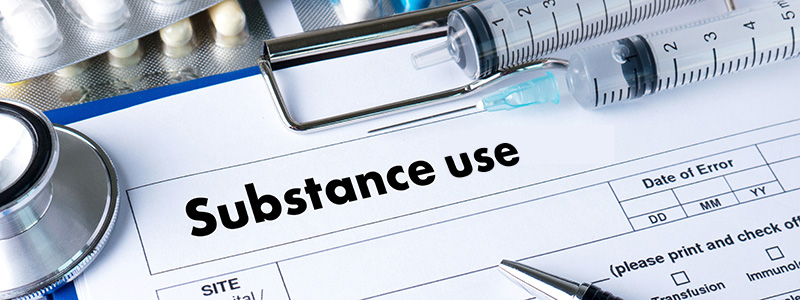
Building Infrastructure for Treating Adolescent Substance Use Disorder (Non-Accredited)
Current Status
Price
Get Started
Course Credit
The following credit is available for this course:
| General Attendance | 0.0 hours |
Note: Continuing education credits are not available for this course.
This course is designed to provide the necessary foundational information for pediatricians looking to treat substance use disorders in the primary care setting. It will cover clinical language, common substances and their treatment, urine drug testing, and more.
Learning Objectives:
At the conclusion of this educational program, learners will be able to:
- Understand the impact of common substances on the adolescent brain.
- Learn to provide evidence-based treatment of substance use disorders in adolescents.
- Learn when to refer to substance use counseling.
- Learn how to appropriately discuss substance use and substance use disorders.
- Learn to clinically advise parents and caregivers of adolescents with substance use disorders.
- Learn how to appropriately use urine drug testing during substance use disorder treatment.

Sharon Levy, MD, MPH
Developmental-Behavioral Pediatrician, Addiction Medicine Specialist, and Director of the Adolescent Substance Use and Addiction Program at Boston Children’s Hospital
Sharon Levy, MD, MPH is a Developmental-Behavioral Pediatrician, Addiction Medicine specialist, Director of the Adolescent Substance Use and Addiction Program at Boston Children’s Hospital and Associate Professor at Harvard Medical School. Over the past 20 years she has evaluated and treated thousands of adolescents with substance use disorders, and she has written extensively on the topic. In 2016 she established the nation’s first accredited Pediatric Addiction Medicine Fellowship training program.

Miriam Schizer, MD, MPH
Medical Director of the Adolescent Substance Use and Addiction Program at Boston Children’s Hospital
Dr. Miriam Schizer graduated from Harvard Medical School in 1992 and finished her pediatrics residency at Boston Children’s Hospital in 1995. Prior to joining the Adolescent Substance Use and Addiction Program (“ASAP”) at Boston Children’s in 2009, she pursued fellowship training in pulmonary medicine, got a master’s degree at the Harvard School of Public Health and worked in primary care. She has spent the last 13 years working in addiction medicine as an attending physician in ASAP and became the clinic’s medical director in September 2022. She is board certified in general pediatrics and addiction medicine. She devotes a great deal of time teaching primary care physicians on the screening and treatment of adolescents with substance use through her collaboration with the Pediatric Physician’s Organization at Children’s, or PPOC.

Shannon Mountain-Ray, MSW, LICSW
Director of Integrated Care for the Adolescent Substance Use and Addiction Program’s Primary Care Program at Boston Children’s Hospital
Shannon Mountain-Ray, MSW, LICSW is the Director of Integrated Care for the Adolescent Substance Use and Addiction Program’s Primary Care Plus Program at Boston Children’s Hospital. Shannon is a clinically trained social worker who has worked with adolescents and their caregivers in various capacities for over 20 years. She has served in direct care, supervisory and administrative roles throughout her career and has extensive experience teaching and training on topics related to adolescent substance use She has participated on various committees and task forces and provided consultation to legislators, organizations, schools, etc. around issues such as legalization and regulation of substances as well as education and treatment of adolescent substance use.

Ariel Botta, PhD, MSW, LICSW
Coordinator of Group Psychotherapy, Adolescent Substance Use and Addiction Program at Boston Children’s Hospital
Ariel Botta, PhD, MSW, LICSW is the Coordinator of Group Therapy for the Adolescent Substance Use and Addiction Program’s Primary Care Program (ASAP-PC) at Boston Children’s Hospital. Dr. Botta is a clinically trained social worker and researcher who has worked at Boston Children’s Hospital for over 22 years in many different capacities. Her areas of specialization include working with youth coping with substance use, with transgender and gender diverse youth, and providing therapy and support to youth coping with mental health challenges. She is a career group worker and specializes in using evidence-based mindfulness in a therapeutic capacity and in her research.

Shawn Kelly, MD
Pediatric Addiction Medicine Fellowship Graduate, Adolescent Substance Use and Addiction Program at Boston Children’s Hospital
Dr. Shawn Kelly is a pediatrician and adolescent addiction medicine provider in Ottawa, Canada. After completing medical school at Queen’s University in Kingston, Canada, he trained further in pediatrics at Western University in London, Canada. He completed his clinical fellowship with the ASAP at the Boston Children’s Hospital in 2021. Dr. Kelly is a strong community voice for the needs of young patients with substance use disorders across Ontario.
Pediatric Addiction Medicine Resources
BriefBriefInterventions-Examples-for-Providers
Buprenorphine-Induction-Protocol-How-To
Buprenorphine-Triage-Protocol-How-To
Caffeine-Use-in-Adolescents-PDF
CBD-FAQs-Information-for-Providers
Communication-Guidance-for-Caregivers
Coping-With-Cravings-Guidance-for-Patients
Higher-Level-of-Care-Referral-How-To
Managing-Cannabis-Hyperemesis-Syndrome-How-To
Managing-Co-Occurring-Medical-Disorders-How-To
Managing-Co-Occurring-MH-Disorders-How-To
Naltrexone-Rx-Checklist-How-To-1
FINAL_nicotine_vaping_quiz_8.9.2022
Preferred-Terminology-Information-for-Providers
Quit-Date-Patient-Communication-Tool
Screening-and-Brief-Intervention-How-To
Secondhand-Cannabis-Use-Information-for-Providers
Stimulant-Misuse-in-Adolescents-PDF


